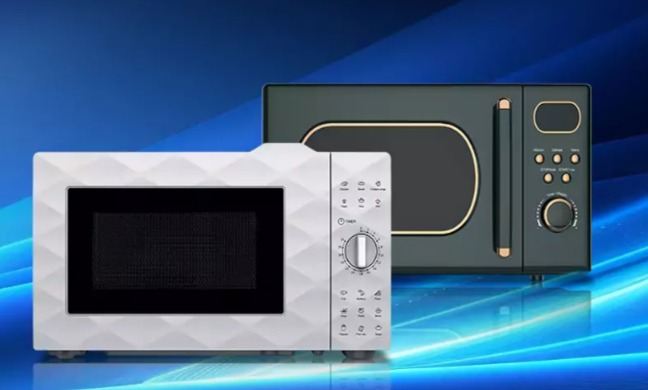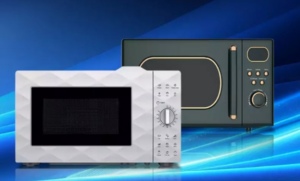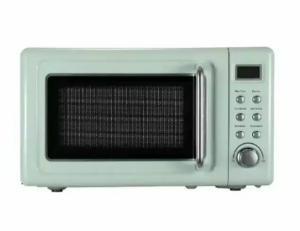How to Make a Microwave 101: An Ultimate Guide
The magnetron converts power into high-frequency microwaves, essential for energy-efficient cooking. Interestingly, almost 90% of US houses have a microwave, which demonstrates their importance. [1]Thus, knowing how to make a microwave requires learning about electromagnetic theory and materials science for the safe containment and directed use of microwaves. Microwave technology advances in contemporary kitchens for better energy efficiency.
What A Microwave Is and Its Primary Functions
A microwave uses a magnetron to create microwave radiation at 2.45 GHz to excite water molecules and heat meals.[2] The device uses dielectric heating to rapidly heat food while agitating polar molecules with an electromagnetic field. How to make a microwave should have a spinning turntable for uniform heating and a metal mesh door to protect users from radiation. Microwaves also have numerous power settings to adjust energy intensity and distribution for defrosting and reheating. Not only can they heat, but they also cook an array of dishes fast and effectively.
Microwave Materials and Components
- Outside Structure
The exterior structure is key to its design and function when considering how to make a microwave. Makers use stainless steel in kitchens with humidity and shifting temperatures for its durability and corrosion resistance. Some versions employ painted or galvanized steel, which is cheaper and more durable but lacks stainless steel’s beauty and anti-corrosive faces. Stainless steel can resist scratches and dents, which affects the microwave’s future and upkeep.
- Inside Structure
A microwave’s internal composition includes materials that can tolerate high temperatures and radiation. Ceramic and glass turntables are desirable owing to their heat stability and cleanliness. The inside walls are stainless steel to reflect microwaves and guarantee even cooking. Heat-resistant polymers like PET are used for insulation and lower weight in places away from direct radiation.
How Are Microwaves Produced: Step-by-Step Guide
Designing the Microwave Cavity
Energy efficiency depends on microwave cavity design while learning how to make a microwave. A microwave cavity is a particular kind of resonator. It is characterized by a metal structure that is either entirely enclosed or mostly enclosed. It contains electromagnetic fields within the microwave or RF segment of the spectrum. Calculations establish the appropriate size to match the magnetron’s frequency for lower-standing wave patterns.
Magnetron Assembly
In the process of how to make a microwave, the magnetron creates microwaves. The magnetron looks like 2 large metal boxes stacked on top of each other near the back of the microwave oven. Essentially, it has a vacuum-housed cathode and anode. A magnetic field perpendicular to electron flow influences electrons. The magnetron’s antenna must be situated correctly to channel microwaves into the cavity.
Main Chassis Assembly
Chassis assembly occurs on a pallet at the station. First, the main chassis is positioned onto the pallet, and then the cavity is affixed to it using screws. Then, the door is attached to both the cavity and chassis using hinges. Next, the magnetron tube is bolted onto the side of the cavity and main chassis.
To power the magnetron tube, a circuit is used, comprising a transformer, capacitor, and rectifier, all mounted directly onto the chassis near the magnetron tube. Insulation protects electronics and prevents heat loss. The layout should optimize air flow and cooling for component life and function.
Stirrer Fan
A microwave’s stirrer fan evenly disperses microwaves while eliminating hotspots and guaranteeing uniform cooking. The stirrer fan is installed above the cavity. The material for the fan must be well-selected to avert melting or harm.
- User Interface and Controls
The interface and controls are easy to use. A microcontroller manages power, cooking time, and functionality according to human input. The interface displays settings and cooking time on an LCD or LED display. Meanwhile, it uses high-quality tactile switches or capacitive touch panels.
- Door Assembly
In how to make a microwave, the door assembly is vital for protection. A front panel on the chassis allows users to select cooking settings. Behind it, a control circuit board manages operations in sequence when front panel switches are pressed. The metal outer case is formed separately and then bolted onto the preassembled microwave oven chassis.
Product Assembly
During product assembly in how to make a microwave, all components of a microwave are put into the main chassis. For minimal vibration and noise, this step comprises wiring and item mounting using brackets and screws. For protection and functionality, thermal and electrical connections are double-checked. It verifies that every component is attached and grounded.
Testing and Quality Control
How to make a microwave calls for testing and quality control. Each product is tested for electromagnetic leakage for safety. Functional testing tests heating efficacy, interface reaction, and durability of repeated use. Units that fail tests are altered or discarded, depending on the defect.
Get Custom Microwave Ovens from WEILI
WEILI understands that bespoke microwaves enable manufacturers to separate their goods while adapting design, functionality, and technology to market needs. For instance, when you seek how to make a microwave for your brand, we start with a consultation to ascertain your capacity, convection, steam, and design needs. We then use our R&D skills to create a prototype with membrane controls, digital interfaces, or specific heating technologies. After your approval and the prototype passes our safety and performance testing, mass production begins at one of our microwave oven facilities.
WEILI has a high-level quality management system, certified with ISO9001, ISO14001, and 3C. It also holds over 10 international certifications, such as GS, CE, CB, SAA, ETL, FCC, FDA, ROHS, LFGB, DGCCRF, and REACH. So, working with us guarantees a product that suits your vision and is supported by production and quality assurance.
Reference
- Microwave Oven Regression Model. Available at https://www.bls.gov/cpi/quality-adjustment/microwave-ovens.htm
- Physics of the microwave oven. Available at https://www.sfu.ca/phys/346/121/resources/physics_of_microwave_ovens.pdf


